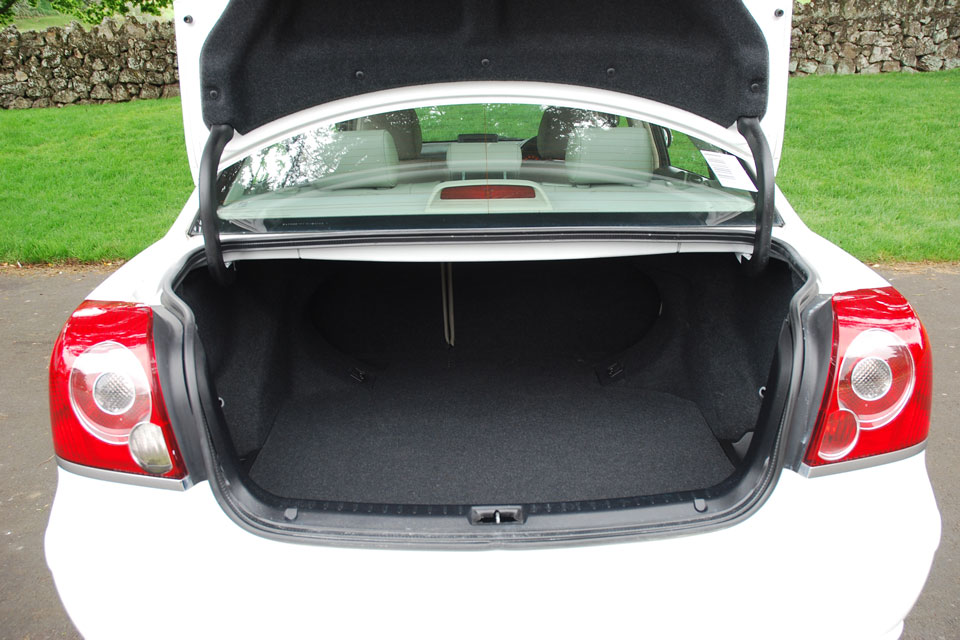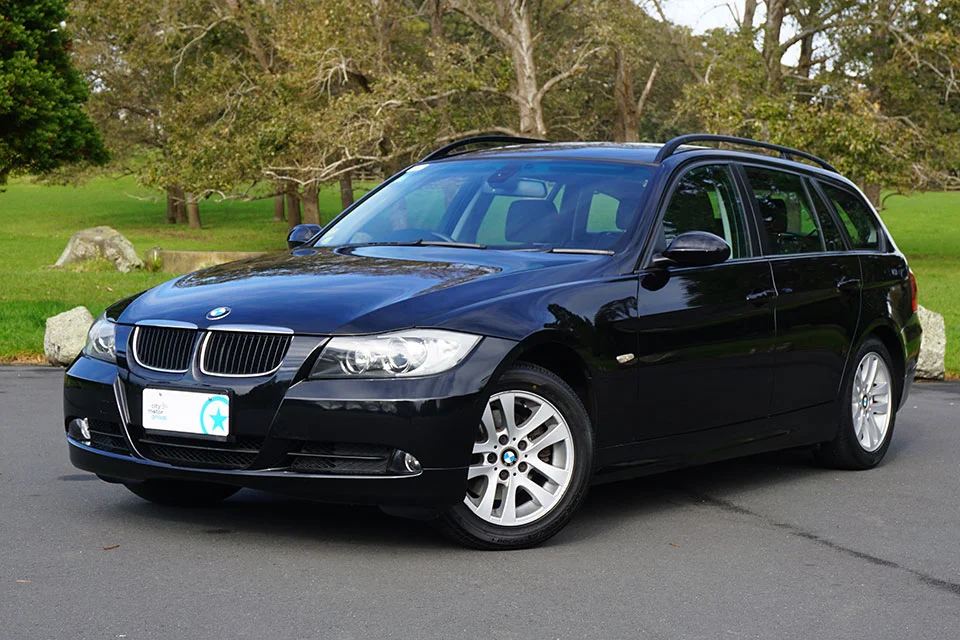Toyota Avensis 2003-2009 used car review
The Toyota Avensis is most commonly available as a practical station wagon.

The Toyota Avensis is most commonly available as a practical station wagon. It has a high level of safety features for its age and price.
The Toyota Avensis was developed in Europe and built in the United Kingdom. It was brought to New Zealand in station wagon form only as a replacement for the popular Camry and Corona wagons. In Japan, it was sold as a high-specification premium model. All sedans available here are used import models.
Inside and out
The Avensis looks like it is shaped for maximum interior space, with a short bonnet, very short rear tail and slightly tall roof for more headroom. At the front is a body-coloured grille with a panel between the projector-style headlamps. Most used import models don’t carry a Toyota badge on the front, just a badge for the dealer group they were sold at in Japan instead. Thick protection strips run around the car, including the front corners - great for minor parking bumps.
The interior feels light and airy, helped in our review vehicle by the seats and lower areas of trim being covered in light plastics and leather. The instruments sit under a “double-bubble” shaped hood and are orange with chrome rings around them.
The centre of the dash features a pop-up screen for the navigation system, although this is Japanese-only. Below it are controls for the six-disc CD player stereo and climate control which has separate settings for the driver and passenger. The radio will need a band expander to receive local stations.
The front seats are very soft yet reasonably supportive in the front. The tan leather in our review vehicle feels soft and high quality. Both front seats are electrically adjustable. The rear seat has reasonable legroom, though taller passengers could find a shortage of headroom. The narrow seat’s centre section is slightly raised, which means three adults are unlikely to be comfortable for long.
The boot of the Avensis is huge for the class at 520 litres, potentially enough to take four large suitcases. Its opening is a little small, which can make loading a bit more difficult. The rear seat splits 60/40 and folds forward should you need to carry larger items. The station wagon is a better option if you need to do that regularly.
On the road
Three engines are available here in the Avensis. The base model New Zealand-new car was fitted with a 1.8-litre four-cylinder engine and standard models and the base Japanese model feature a 2-litre four-cylinder engine. Transmissions include five-speed manuals, four-speed automatics and a five-speed automatic.
Our review vehicle features a 2.4-litre four-cylinder engine, which produces 120kW and 231Nm, paired with a five-speed automatic that can be shifted manually. The Avensis gets along very well with this engine, although it does not feel as responsive and sporty as a Mazda6/Atenza.
The suspension is quite firm and there is little body roll, but comfort is still very good. The steering disappoints as it is a bit vague and offers little feel. The brakes are responsive although a little uneven - they grab more near the end of braking than at the start. Road noise is very low.
Our review vehicle features a reversing camera and we think these are a must on this model. They are not fitted on either the base New Zealand-new model or entry-level import cars.
The Avensis is a letdown on its tow rating. We could only find official tow ratings for the 2-litre model, which can handle a meagre 500kg unbraked (a small garden trailer) and 1,400kg braked (a small-to-medium trailer boat).
Safety
RightCar lists the Avensis as having a five-star ANCAP rating (2003 and onwards). Standard safety equipment levels are very high and include front, side, driver’s knee and curtain airbags, electronic stability control and electronic brake-force distribution. Import models and New Zealand-new cars have the same level of safety equipment.
ISOFIX child seat mounts and top tethers are found in the window positions at the back. All three rear seats feature full shoulder-type belts, which offer more protection than the lap-only type.
Reliability
The Avensis is considered to be well built and reasonably reliable. The engine uses a timing chain which will not require regular replacement.
The only repair is a full rebuild and it’s probably better just to live with it unless consumption is excessive. That means it is crucial to check and top up the oil regularly. The 2-litre engine uses a direct injection system and is sensitive to fuel quality.
There have been issues with rough running and surging. The problems are complicated to work out and high bills for diagnostics have been reported. If you do have one of these cars, it is imperative to run it on premium fuel.
The plastic around the instruments is fragile and known to crack. The trim on many vehicles will have been visibly patched and the only real fix is a new trim. Cases are beginning to appear of headliner fabric separating from the ceiling. Look for bubbles and surface separating, particularly around the top of the rear passenger doors. A replacement will cost around $700 fitted.
The headlight lenses can become cloudy or turn yellow over time. If they get too bad, it can cause a Warrant of Fitness fail. They can be polished out with kits available on Trade Me or a professional can do it for you.
Cost of ownership
Toyota recommends servicing the Avensis every year or 15,000km whichever comes first. A dealer quoted us $280 for this service.
RightCar estimates that over 14,000km of driving a year, an Avensis will cost $2,660 a year to fuel. The 60-litre fuel tank will cost $120 to fill at $2 a litre and should take you 580km before the fuel light comes on.
A vehicle licence for the Avensis costs $76.92 a year, with the car in the cheapest ACC levy group.
Trade Me Insurance estimates insurance for an Avensis valued at $7,310 will cost $45.14* per month. This is $1.50 less than a Mazda6.
Buyers’ guide
The Toyota Avensis is available on Trade Me from $2,600 to $15,000. The higher-specified, lower-mileage Japanese import cars are worth the most. Plenty of cars with less than 100,000km on the clock are available for around $7,000 and offer fantastic value. When it comes to safety features for money, the Avensis is one of the best options in the market.
New Zealand new models
- GL - Powered by a 1.8-litre four-cylinder engine paired with a five-speed manual transmission. Features steel wheels, air-conditioning, CD player stereo, separate climate control settings for the driver and passenger, front, side, curtain and driver’s knee airbags, and electronic stability control.
- GX - Powered by a 2-litre four-cylinder engine paired with a five-speed manual or four-speed automatic transmission. Adds separate climate control settings for driver and passenger, automatic headlights, automatic wipers, cruise control and fog lights.
- Touring - Powered by a 2-litre four-cylinder engine paired with a four-speed automatic transmission. Adds 17-inch alloy wheels, security alarm, leather steering wheel, tinted windows and passenger reading lights.
Japanese models
- Xi - Powered by a 2-litre four-cylinder engine paired with a four-speed automatic transmission. Features steel wheels, air-conditioning, CD player stereo, separate climate control settings for driver and passenger, front, side, curtain and driver’s knee airbags, and electronic stability control.
- Li - Powered by a 2.4-litre four-cylinder engine paired with a five-speed automatic transmission. Adds 17-inch alloy wheels, security alarm, leather steering wheel, tinted windows and passenger reading lights. Commonly optioned with a part or full leather interior.
- Qi - Powered by a 2.4-litre four-cylinder engine paired with a five-speed automatic transmission. Adds full leather interior, electric driver's seat and body kit.
Timeline
- 2003 Launched in Japan and the United Kingdom
- 2004 Launched in New Zealand
- 2005 Larger 2.4-litre engine added.
- 2005 Given minor cosmetic facelift
- 2009 Replaced by new model
Details
2007 Toyota Avensis Qi sedan
2.4-litre four-cylinder, 120kW and 231NM
$5,000 to $13,000 for models which have travelled 70,000 to 120,000km
Five-speed automatic, front-wheel drive
Five-star ANCAP
15,000km or twelve months
Space saver
9.5-litres per 100km (claimed)
Premium
4645mm
1760mm
1480mm
500kg (unbraked), 1400kg (braked)
11m
This review covers the Toyota Avensis for model years 2003, 2004, 2005, 2006, 2007, 2008 and 2009.
Review vehicle supplied by Turners Cars.
*Our insurance estimates are based on a 35-year-old male with no accidents in the last two years, garaging the car in Mission Bay, Auckland. The car is not used for business and will cover 10,000km to 20,000km a year. We estimate with no option add-ons and $500 excess. Customise your estimate at Trade Me Insurance.
Image gallery
Also consider






